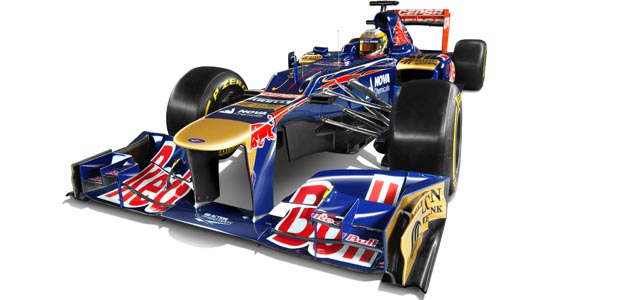
This will be the seventh year that Scuderia Toro Rosso competes in the Formula 1 World Championship, since the team was created with a view to finding two extra cockpits for the stars of the future coming through the ranks of the Red Bull Junior Driver Programme. Seven years down the road, that is still very much the team’s raison d’etre, with a completely new driver line-up for 2012, featuring Daniel Ricciardo and Jean-Eric Vergne.
The STR7 is the third car to be designed and built by the team at Faenza after the team stopped using Red Bull Technologies chassis.
Technical Director Giorgio Ascanelli explains some of the design elements of the STR7:
“One of the rule changes for this year that had a significant effect on the design of the car was the need to lower the nose. This is a safety rule put forward by the FIA in order to tune the height of the nose to match the anti-penetration panels which have been applied to the side of the monocoque to protect the driver. The shape of the front end of the car is now less favourable than it was in terms of its aerodynamics.
Subscribe to Racecar Engineering
Keep up with the latest developments in motorsport technology with Racecar Engineering, the world’s leading publication for technical insight.
Save up to £33 when you subscribe and never miss an issue
Choose from our Print, Digital and iPad editions
We also had to contend with a rule change that extended the anti-penetration panels around the car which are now larger, to provide greater protection for the driver: a good move for the drivers, but one with implications on the performance of the car.
The third point relates to the exhausts as the rules now demand we relocate the exhaust exit to a more benign position, which effectively means no low exhaust blowing under the diffuser just ahead of the rear wheel. This has involved moving the exhausts higher, to where they were in 2009, before the new rules regarding bodywork had come out. This rule change has therefore led to the loss of a very high energy stream that will slow the cars down considerably, unless of course someone has come up with something particularly interesting! The exhaust blowing restrictions will effectively reduce the effect by a massive amount, down to about 10% of what it was last year.
Less obvious to the naked eye, another technical directive from the FIA limits very much what you can do to the engine in terms of electronic set-up. I believe it will be very difficult to get any advantage over one’s opponents out of this area as it is now closely monitored.
One very significant change concerns the front wing. It was announced quite late in the form of an FIA technical directive: concerned by vibration and excessive deflection of the front wing, for 2012, the governing body has drastically reduced the flexibility of the front wing, allowing it to move by only 10mm instead of 20mm when a 100kg load is applied to it. The need for added stiffness means an increase in weight and so we have a large amount of weight added to the nose of the car, which can be problematic in dealing with the regulation regarding the weight distribution of the car.
Looking at the design of STR7 in general terms, we could start from the fact that 2011’s STR6 was a good concept, but it did not lend itself well to running a low exhaust and was better with a high one. Therefore it was logical that as the rules have changed in this direction, we should stick with a similar concept for 2012, expanding on the idea and its characteristics. Cooling as always, plays a major part in the design of the car and we have done something which should allow even more of an undercut on the sidepods, aimed at getting a better streamlining of the rear car. In simple terms, we have made a shorter chassis, with a larger distance between the engine and the gearbox, so that the car can be thinner and more streamlined.
We have tried to improve the behaviour of our DRS and we have a new generation of wings aimed at this, hopefully in time for the debut of the car. We have also worked on the braking system, because we wanted to improve its efficiency, both front and rear.”
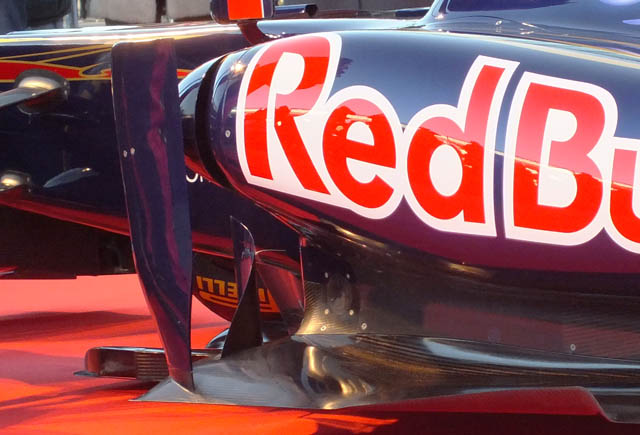
The new Toro Rosso is packed with interesting details, the undercut sidepod concept has been carried over from the STR6, and taken to a further extreme. Ascanelli believes the change in exhaust regulations will favour this concept.
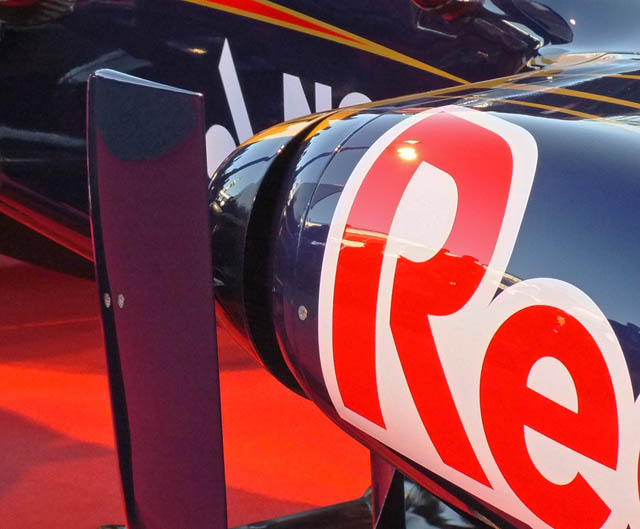
At the front of the STR7’s sidepods there is an opening, hidden behind the turning vane – the purpose of this is unclear but it could be similar in concept to the approach used by McLaren on the MP4-26 (below)
The exhaust location on the roll out spec STR7 is fairly conventional.
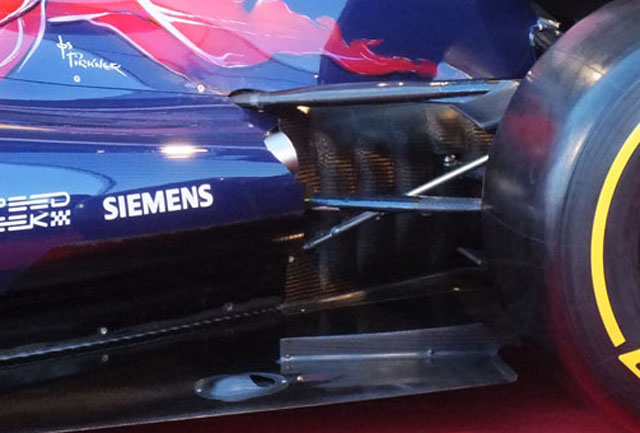
The roll hoop air intake on the Toro Rosso is very pronounced and the supports are very widely spaced (below)
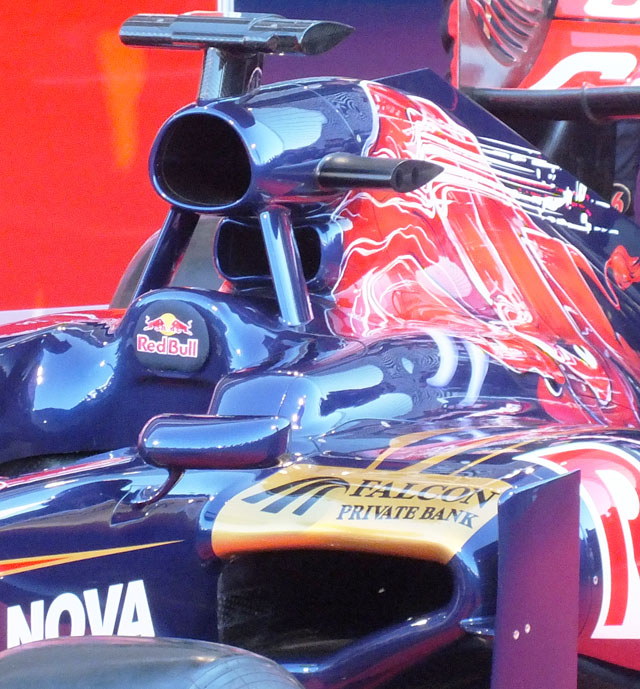
This is due to an additional cooling duct being placed beneath it. This was a trade off to allow the main sidepod apertures to be smaller, the duct provide additional flow to the heat exchangers.
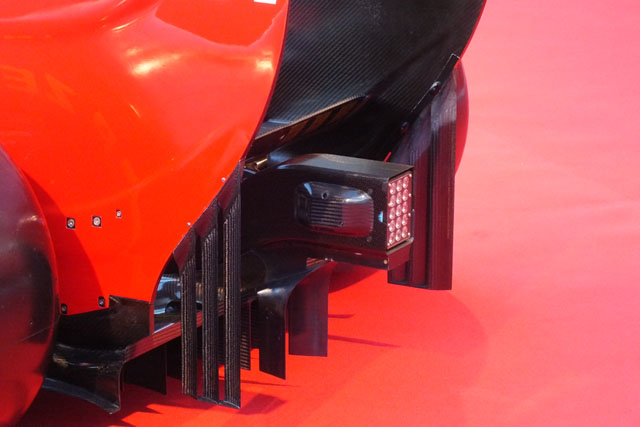
Toyota style diffuser tails are present on the car.
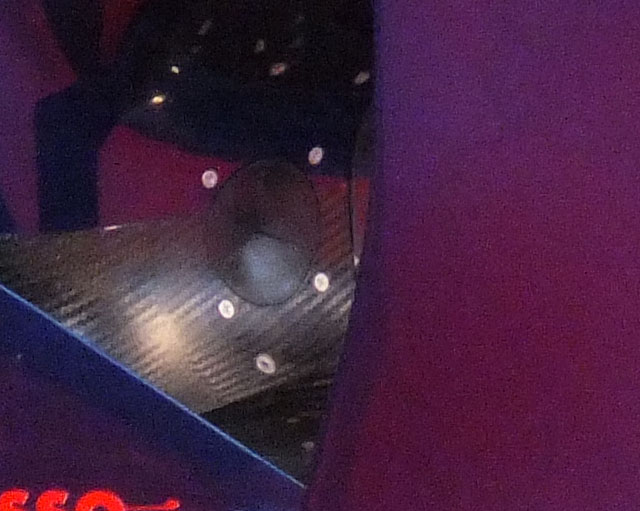
There is an unusual rubber component in the sidepod (above) it has openings on the surface and it’s function is unknown. (answers on a postcard etc…). It could be that the rubber opens up with air pressure at higher speeds and cools a part of the car. But the reality is far more mundane – it is simply where the umbilicals attach to the car – one side is for the fast fill airline to the pneumatic valve system on the Ferrari 056, the other is for electronics.
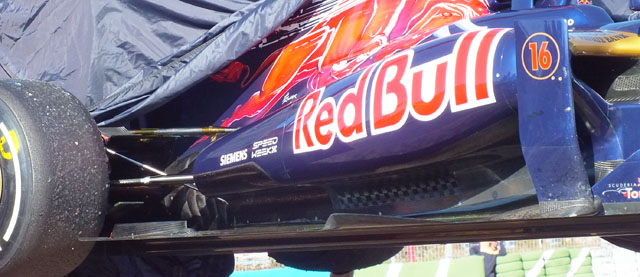
An oil pressure issue on the STR7 cut short its first days testing, but resulted in a good look at some of the design features of the car – such as the undercut sidepods – clear to see (above), being craned onto the scrap wagon also gave a rare look at the underside of the car.
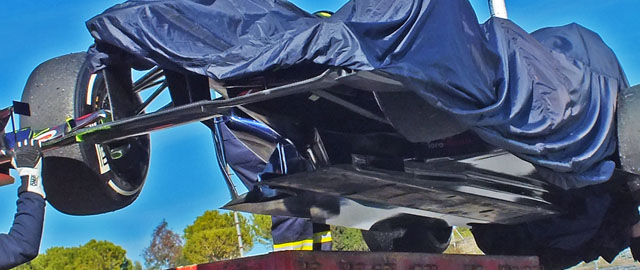
The Toro Rosso engineers have clearly decided to spend a lot on flow vis paint, completing one run at Jerez with a huge amount of it over the car.
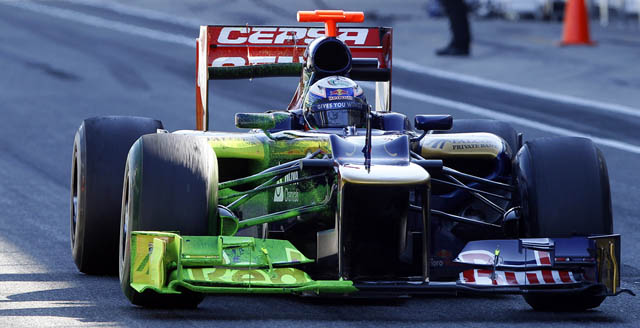
Test 2: Barcelona
The Italian version of Red Bull Racing, had a bit more trouble with the innovative STR7 than it did at Jerez. Laurent Mekies, the teams Chief Engineer explains
“It’s true we covered a shorter distance this week at the Catalunya circuit (1207 kilometres) than we did in Andalusia (1402,) but having shaken down the new car in Jerez, it was now time to start finding out how it works, how it reacts to set up changes, different fuel loads, ride heights and all the other tasks that go into getting a complete picture of a new Formula 1 car.
That involved changing parts and other time consuming work and that meant down time in the garage. But the programme laid out at the start of the week was completed by the time the chequered flag came out today at 5pm. We shouldn’t forget we also have something of a steep learning curve with our drivers, especially Jean-Eric who is not only new to the team but new to Formula 1.
Once the red light came on at the end of pit lane to signify the end of four days of frantic work, the job of packing up began in the Toro Rosso garage, but not the usual full pull down as the teams are back here for the final test which starts on 1 March. However, all the team are heading home for a few days, as is the race car to be worked on further in the Faenza factory
The programme was a mix of set-up evaluation and working in race conditions, as it was our first test of the year with the full race team carrying out the pit stop practice. This was important as it is an area where we want to improve for the coming season. With higher temperatures than at the Jerez test and the past two days in Barcelona, conditions were approaching those encountered during the season, which provided useful data regarding tyre management and car cooling.”
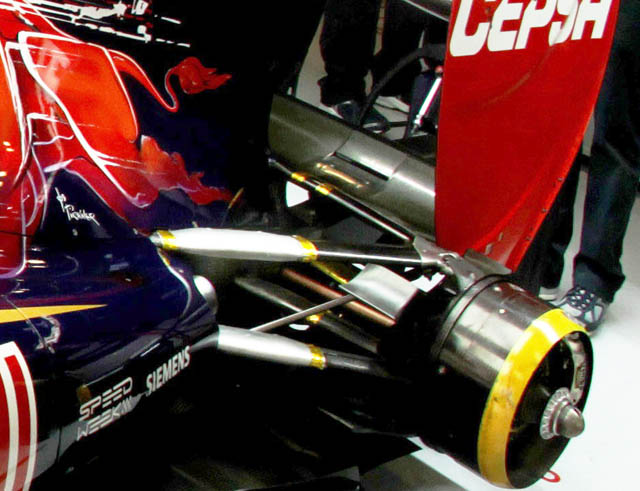
The temperature problem caused by the exhaust blowing on the rear suspension has been resolved partially by cladding the wishbones in a thermal barrier (silver sections on the wishbones above). Its not clear if these metal jackets are the same as those seen seen on the Red Bull RB8. However the car did suffer a drive shaft failure at one point. (wri2.net)
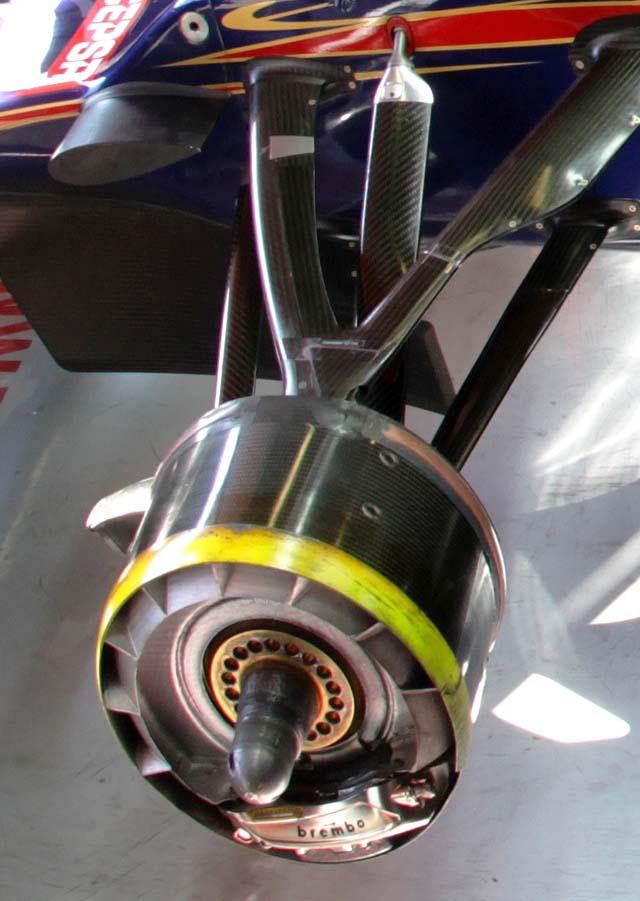
The test provided a look at the STR7’s Brembo brakes as well as a good look at the cars splitter, which has a linear potentiometer in place of the stay (the telescopic part) this would likely be monitoring flexibility.
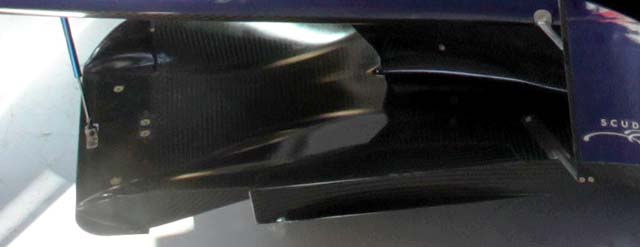
Test 3: Barcelona
Toro Rosso had a varied test, evaluating some aero developments and tackling a full race simulation. The team had an engine failure but the Ferrari 056 unit had nearly completed its duty cycle.
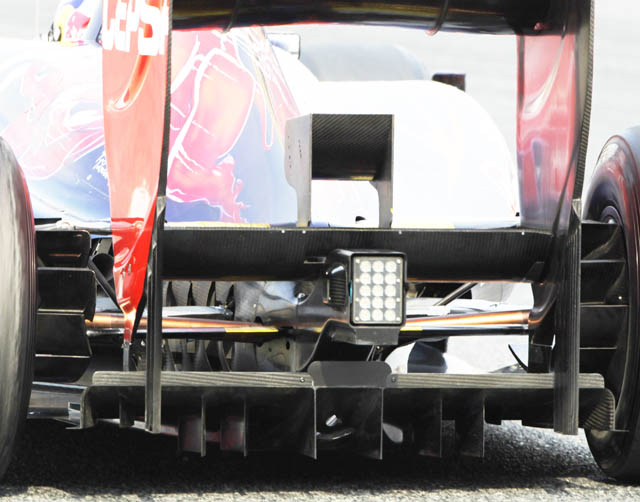
The STR7 gained a winglet above the diffuser (above), this concept is commonplace on the current generation of F1 cars.
Melbourne
Car 16: Toro Rosso STR7-01
Position: 9th
Driver: Daniel Ricciardo
Car 17: Toro Rosso STR7-03
Position: 11th
Driver: Jean Eric Vergne
Sepang
Car 16: Toro Rosso STR7-01
Position: 12th
Driver: Daniel Ricciardo
Car 17: Toro Rosso STR7-03
Position: 8th
Driver: Jean Eric Vergne
In free practice the team evaluated some new aerodynamic parts on the STR7 as well as some tyre compound testing. Flow vis paint was applied to the areas of interest around the front of the car and in case you were wondering how it is applied – they use a brush.
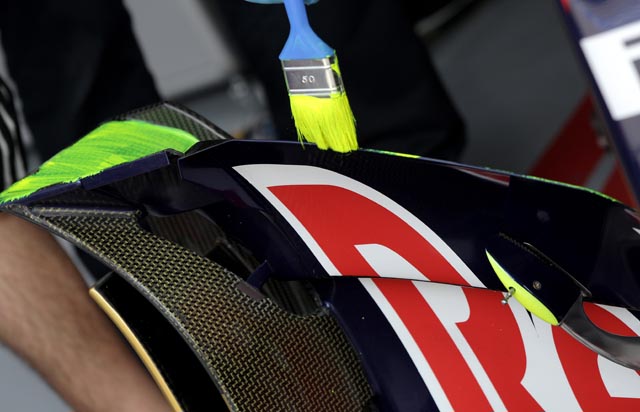
Shanghai
Car 16: Toro Rosso STR7-01
Position: 17th
Driver: Daniel Ricciardo
Car 17: Toro Rosso STR7-03
Position: 16th
Driver: Jean Eric Vergne

